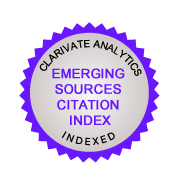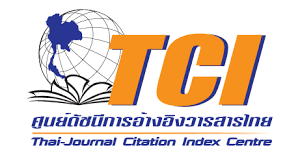Development of WO<sub>3</sub> nanostructure by acid treatment and annealing
Keywords:
Tungsten oxide, Nanoplates, Acid treatment, AnnealingAbstract
Tungsten oxide (WO3) nanostructure is an interesting material for many applications such as batteries, gas sensors, photocatalysts, display utilizing, and smart windows. In this work, we fabricated the WO3 nanoplates by sputtering, acid treatment and annealing. Firstly, a tungsten film was deposited on a silicon or glass substrate by sputtering. The film was then immersed in nitric acid (HNO3) at 80 °C. The effect of the exposure time, and annealing temperature was investigated. After the acid treatment, the tungsten oxide hydrate or tungstile (WO3•H2O) with nanoplate structure was developed. The optical transmittance in the visible range was significantly improved compared to the continuous tungsten film. The size of the nanoplate was found to increase with increasing the immersion time. The tungsten oxide hydrate nanoplates transformed into WO3 after annealing at ≥ 200 °C.  Increasing annealing temperature resulted in the decreasing size of the nanoplates. The shape of the nanoplates became more of the rectangular shape with annealing. The optical transmittance of the WO3 film increased with the annealing temperature up to 400 °C.
Downloads
References
Bignozzi, C.A., et al. (2013). Nanostructured photoelectrodes based on WO3: applications to photooxidation of aqueous electrolytes. Chem Soc Rev. 42(6): 2228-46.
Horprathum, M., et al. (2013). NO2-sensing properties of WO3 nanorods prepared by glancing angle DC magnetron sputtering. Sensor Actuat B-Chem. 176: 685-91.
Santato, C., et al. (2001). Crystallographically oriented Mesoporous WO3 films: Synthesis, characterization, and applications. J Am Chem Soc. 123(43): 10639-49.
Garg, D., et al. (2005). An economic analysis of the deposition of electrochromic WO3 via sputtering or plasma enhanced chemical vapor deposition. Mat Sci Eng B-Solid. 119(3): 224-31.
Joraid, A.A. (2009). Comparison of electrochromic amorphous and crystalline electron beam deposited WO3 thin films. Curr Appl Phys. 9(1): 73-9.
Patil, P.S., et al. (2005). Electrochromic properties of spray deposited TiO2-doped WO3 thin films. Appl Surf Sci. 250(1-4): 117-23.
Ng, C.Y., et al. (2015). Effect of annealing on acid-treated WO3 center dot H2O nanoplates and their electrochromic properties. Electrochimica Acta. 178: 673-81.
Li, W.Z., et al. (2012). Platelike WO3 from hydrothermal RF sputtered tungsten thin films for photoelectrochemical water oxidation. Materials Letters. 84: 41-3.
Widenkvist, E., et al. (2008). Synthesis of nanostructured tungsten oxide thin films. Cryst Growth Des. 8(10): 3750-3.
Amano, F., et al. (2011). Facile Preparation of Platelike Tungsten Oxide Thin Film Electrodes with High Photoelectrode Activity. Acs Appl Mater Inter. 3(10): 4047-52.
Downloads
Published
How to Cite
Issue
Section
License
Copyright (c) 2017 Journal of Metals, Materials and Minerals

This work is licensed under a Creative Commons Attribution-NonCommercial-NoDerivatives 4.0 International License.
Authors who publish in this journal agree to the following terms:
- Authors retain copyright and grant the journal right of first publication with the work simultaneously licensed under a Creative Commons Attribution License that allows others to share the work with an acknowledgment of the work's authorship and initial publication in this journal.
- Authors are able to enter into separate, additional contractual arrangements for the non-exclusive distribution of the journal's published version of the work (e.g., post it to an institutional repository or publish it in a book), with an acknowledgment of its initial publication in this journal.








